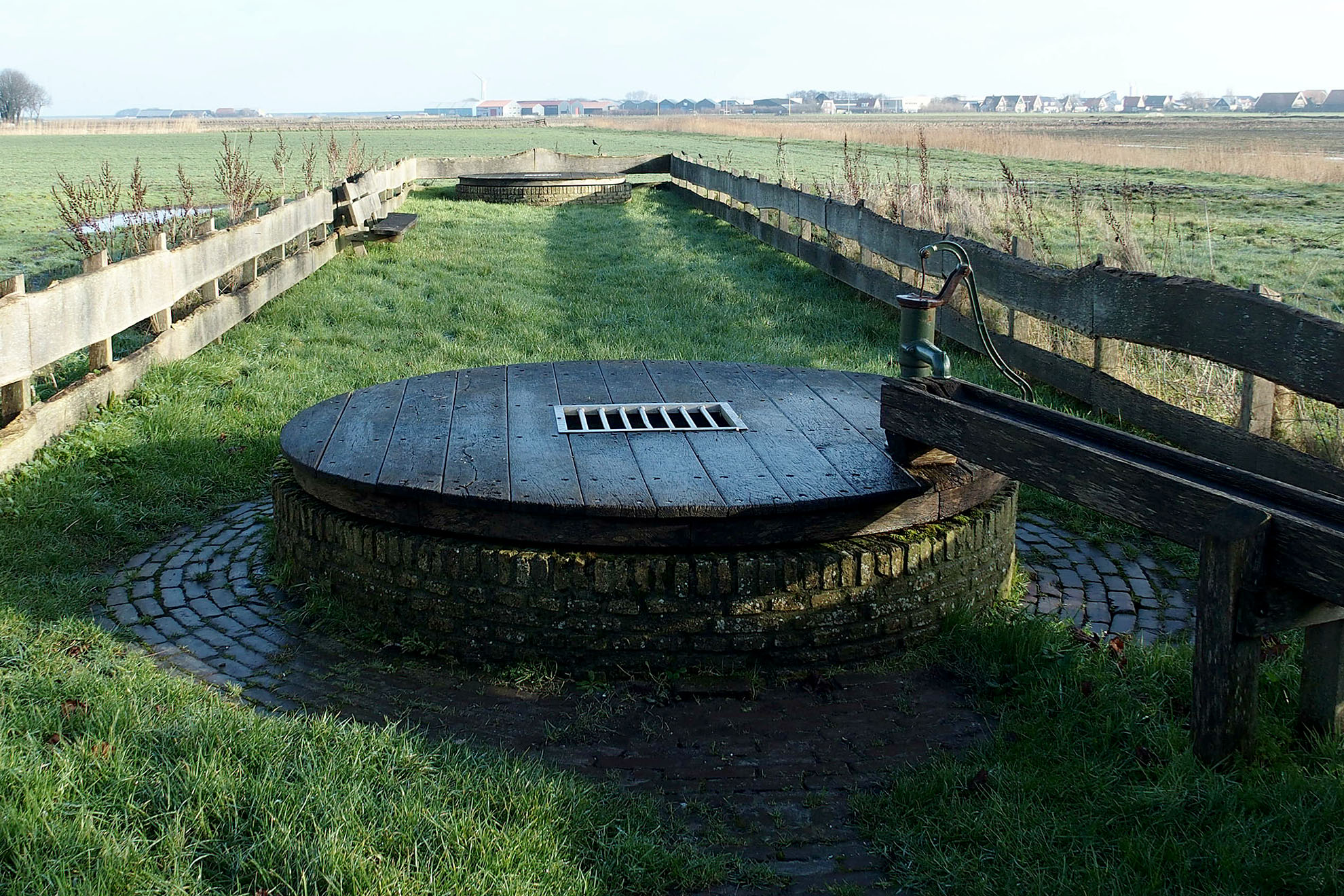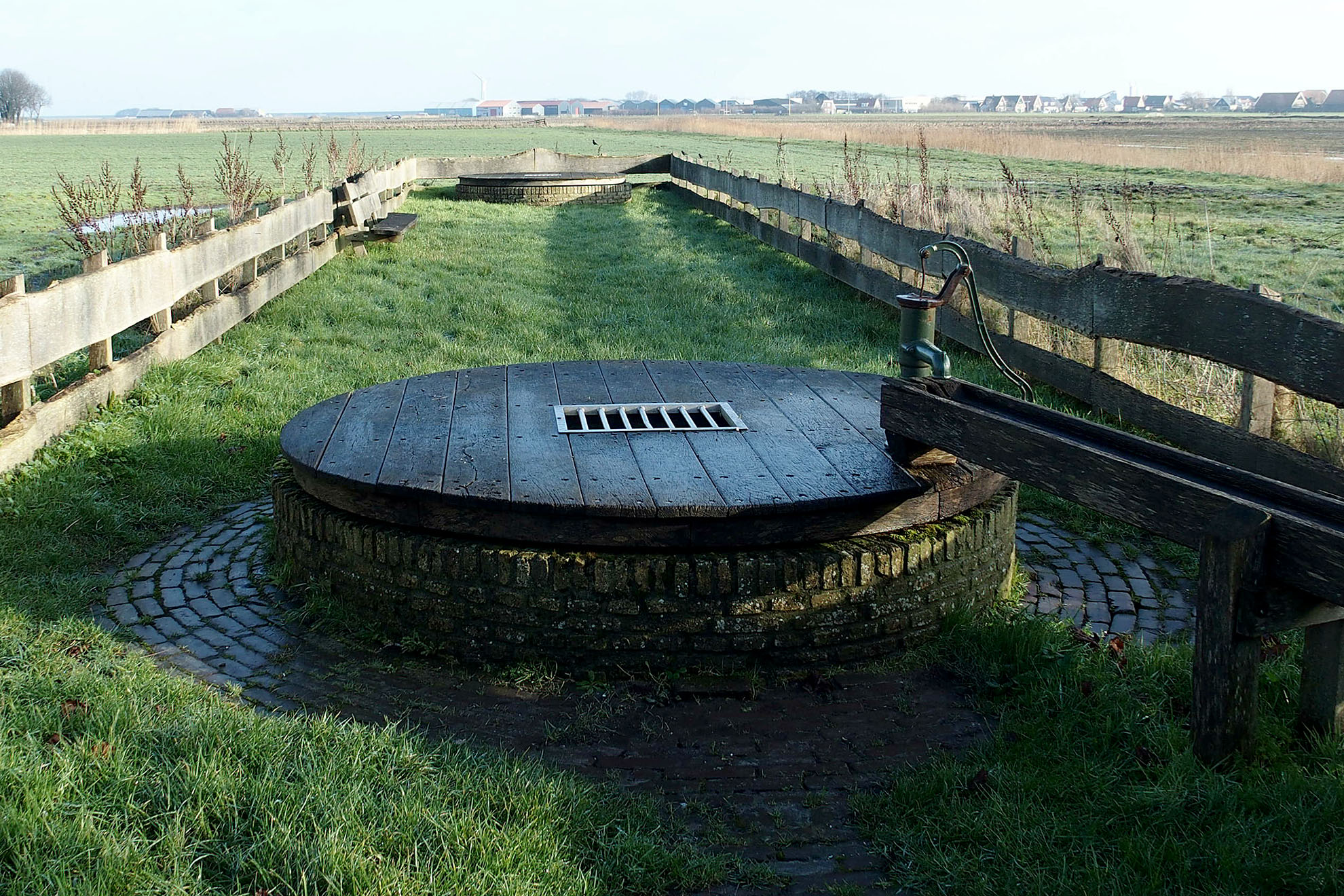Wezenputten

Het weeshuis in Den Burg kreeg in 1635 het recht om water te winnen ten behoeve van schepen die voor Texel lagen te wachten op goede wind voor lange reizen. Een VOC-schip met 300 man bemanning nam voor de reis naar Kaap de Goede Hoop ongeveer 170 grote vaten van ruim 600 liter drinkwater in.
Extra houdbaar door ijzer
Het Texelse drinkwater werd hoog aangeslagen omdat het lang houdbaar is. Het wordt langzaam gefilterd door de keileem onder de Hoge Berg. Bij dat proces lost er ook ijzer op in het water; precies genoeg om een lange houdbaarheid te garanderen.
Bomen, overslaan, roeien

De vaten werden bij de Wezenputten volgepompt. Vervolgens werden ze in een praam, voortgeduwd met behulp van een vaarboom, naar Oudeschild gevaren. Daar werden de vaten over de dijk getakeld. Roeiers brachten de vaten in sloepen naar de wachtende driemasters.
Skilsloot verlengd
Leendert den Berger voorzag dat het overladen van de watervaten in de nieuwe haven van Oudeschild veel minder omslachtig zou kunnen gaan. Hij liet daarom de Skilsloot doortrekken, aan de westkant van het dorp, tot aan de nieuwe dijk van de havenkom. Wat den Berger toen niet kon voorzien was dat de betekenis van de Reede veel kleiner zou worden door de aanleg van het Noord-Hollandsch Kanaal. Toen de zeeschepen vanaf 1825 via dat kanaal naar Amsterdam getrokken konden worden, stortte de markt voor het Texelse drinkwater in. Sindsdien werd het water vrijwel alleen nog maar voor de huishoudens in Oudeschild opgepompt.
Het huis aan de put
Lange tijd heeft er bij de Wezenputten een boerderij gestaan, het ‘Huis aan de put’. De boerderij was, net als de putten, eigendom van het Algemeen Burger Weeshuis. Pieter van Cuyck stond op het boerderijerf toen hij zijn beroemde tekening van de putten en het uitzicht naar de Reede maakte. Later werd deze boerderij ‘De Weezenplaats’ genoemd. Hij raakte in verval en werd in 1849 gesloopt. Acht jaar later verrees 150 meter verderop een nieuwe stolpboerderij, de ‘Nieuwe Weezenplaats’.








